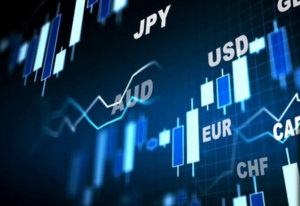Forex Trading Australia – The Beginner’s Guide
Forex trading is the process of buying and selling currencies like the Australian dollar, British pound, and the Euro. The overarching concept is to make a profit when the price of the currency pair changes. If you’re based in Australia and you’re looking to start trading forex online, there is much to learn before taking the plunge. That’s where we come in – we’re here to take you through everything you need to know before you begin forex trading in Australia.
In this article, we explore the ins and outs of what trading forex in Australia entails. Not only do we explain the key terms and processes involved in currency trading, but we also review the top forex brokers and provide a handy step-by-step on how to trade forex in Australia.
Don’t have time to read our guide all of the way through? Below you will find three quick-fire steps to start buying and selling forex right now. If you’re just starting out in the world of online investments, your first port of call will be to pick an Australia forex trading platform. There are many providers that accept Australian residents, so you need to spend some time researching a forex broker that meets your needs. On top of fees, commissions, spreads, tradable currencies, and customer support, you must also explore the broker’s regulatory standing. To help you along the way, below you will find our picks for the best Australian forex brokers of 2020. Plus500 is a UK-based CFD broker which also offers commission-free forex trades. This broker offers thousands of financial instruments via CFD trading, including a comprehensive forex trading department, with a wide range of majors and minors and a good number of exotics. If you're looking to trade assets outside of the forex space, Plus500 hosts everything from stocks, indices, interest rates, gold, and oil all in the form of CFDs. This means that you will be able to trade with leverage. This is capped at 30:1 when trading major forex pairs, and 20:1 on minors and exotics. In terms of getting started, Plus500 requires a minimum deposit of USD $100 (about AUD $150). The forex broker supports several Australian payment methods including a debit/credit card, Paypal, and bank account. You will need to upload some ID before you can request a withdrawal, although Plus500 typically validates documents within 10 minutes. In terms of safety, Plus500 is a publicly-listed company that can be found on the London Stock Exchange. It holds that all-important ASIC license and is also regulated by the FCA, CySEC, and MAS. Our Rating AvaTrade is an established broker that has amassed an excellent reputation in the online forex space. The platform is suitable for both newbie and seasoned investors, and it even supports MT4 and MT5. This is ideal if you are looking to buy and sell currencies in an autonomous manner, as both MetaTrader platforms are conducive for forex EAs (expert advisors) and trading robots. AvaTrade is also popular with Australian traders for its competitive fee structure. For example, you can trade major forex pairs at spreads of 0.9 pips. You will also benefit from fee-free deposits. While we are on the subject of payments, AvaTrade requires a minimum deposit of USD $100 (approx AUD $150). Supported payment options include a debit/credit card or bank transfer, though E-wallets are not supported. Outside of the forex department, AvaTrade hosts thousands of CFDs across several asset classes. Regulation-wise, AvaTrade holds multiple licenses. This includes bodies located in Ireland, South Africa, Japan, and Canada. Our Rating If your main concern is finding a highly established broker that has a track record that spans many decades, IG is a good option. The UK-based broker was founded in 1974 and is regulated by a handful of licensing bodies. This includes regulatory bodies in Australia, the UK, and many others. When it comes to the trading arena, IG lists over 90 forex pairs with tight spreads. Not only does this include all majors and minors, but plenty of emerging currencies. This ensures that you are able to create a highly diversified portfolio of positions. Outside of forex, IG also offers CFDs and traditional share dealing services. In fact, it hosts more than 10,000 financial instruments in total, so if a market exists, you'll likely find it at IG. It supports a range of trading platforms, including MT4. The broker requires a minimum deposit of USD $250 (about AUD $380), which is slightly higher than the other Australian forex brokers we have discussed so far. You can meet the minimum deposit threshold with a debit/credit card or bank account. Our only gripe we have with IG is that it charges a transaction fee of 0.5% and 1% on MasterCard and Visa deposits, so do take this into account. Our Rating So now that you have chosen an Australian broker to facilitate your online trading needs, we now need to discuss how the forex market actually works. After all, it’s not as simple as opening a brokerage account, buying and selling a few pairs and making money. You will be required to perform technical and fundamental research to help you assess which way the markets are likely to go. Before we get to that, let’s start with the basics. This means that when you check your statement, you will see the real-time forex exchange rate that the bank used to facilitate the transaction in AUD. Had you made the purchase just a few minutes later, it is all-but-certain that the exchange rate would have been slightly different. These second-by-second pricing movements are what you will be trading when you join an online forex broker. Confused? Let’s look at a super basic example to help clear the mist. As you can see from the above example, you were required to place a buy order when you opened the position, and then a sell order to close it. This is because you thought that the exchange rate would increase, meaning that the currency on the left (AUD) would outperform the currency on the right (GBP). Had you thought the opposite, meaning the exchange rate will go down, then you would place a sell order to open the position and a buy order to close it. The above forex trading process was completed at the click of a button. Whether you plan to trade forex via your desktop or mobile device, all you need is an account with a regulated Australian forex broker. When it comes to the safety of your funds, you’ll be pleased to learn that the forex trading space in Australia operates in a heavily regulated battleground. At the forefront of this is the Australian Securities and Investments Commission (ASIC). In a nutshell, ASIC is responsible for regulating financial institutions in the country. Not only does this include banks, investment houses, mutual funds, hedge funds, and credit unions but online forex brokers, too. This means that you will benefit from a range of regulatory protections that you might not find in other nations. For example, all ASIC regulated trading platforms are required to keep client funds in segregated bank accounts. In Layman’s terms, this means that the broker cannot use client money to fund its own operations. In theory, this means that were the broker to run into financial difficulties, your money should be protected. Using an ASIC broker comes with a range of other safeguards that have been installed to protect everyday Australians. This includes: All in all, as long as you are trading with a regulated forex broker, you should have no concerns on the safety of your funds. There is no getting away from the fact that most Australian forex traders lose money. This is typical because newbie investors do not spend the required time learning the ins and outs of how the forex space actually works. As we cover in more detail later on, seasoned forex traders will utilize technical and fundamental research tools. This is with the view of predicting which way a particular forex pair is likely to move. With that being said, the biggest risk that you will face as an Australian forex trader is that of losing money. The good news for you is that there is a range of safeguards that you can use to mitigate these risks. This includes the likes of stop-loss orders, guaranteed stop-loss orders, and trialling stop-loss orders. An alternative risk that must be considered is that of a brokerage collapse. While we have already discussed the protections that ASIC brokers offer, this isn’t a 100% guarantee on the safety of your funds. Unlike other countries such as the UK, which benefits from the Financial Services Compensation Scheme (FSCS), there is no deposit scheme that protects Australian investors in the event a broker goes bankrupt. Most online forex brokers will host dozens of currency pairs. As we briefly noted earlier, each pair will consist of two competing currencies. For example, if you wish to trade the US dollar against the Japanese yen, the pair is represented by USD/JPY. With that said, currency pairs are typically split into three main categories; majors, minors, and exotics. Major forex pairs will always contain the US dollar alongside a ‘strong’ currency. This would include the likes of the Australian dollar, British pound, Canadian dollar, Japanese yen, and the Swiss franc. As such, major pairs look like the following: If you’re wondering what the most traded forex pair in the space is, it’s EUR/USD. If you are just starting out in the world of online forex trading, it might be worth sticking with major pairs. This is because majors benefit from the highest spreads, highest liquidity and trading volume, and crucially, the lowest volatility. Minor pairs always contain two strong currencies, but never the USD. In other words, they will consist of the same currencies listed in the section above on majors. As such, minor pairs look like the following: Although minor pairs are heavily traded, you will often find that spreads are slightly less competitive than majors. This is also the case with trading volume and volatility levels. Once again, this goes to show just how strong the US dollar is. Exotic pairs will contain one strong currency and one emerging currency. Think along the lines of the Argentine peso, Mexican peso, and the Kenyan shilling. As such, exotic pairs look like the following: You might want to avoid exotic currency pairs as a newbie investor. They are typically volatile and spreads are often super-wide. In a nutshell, leverage allows you to trade with more money than you have in your account. While this can amplify your winning trades, it can do the same with losses. The overarching concept is that you will be multiplying your stake by a certain factor. For example, let’s say that you have an account balance of $500. If you were to apply the leverage of 10x, you would be able to trade with $5,000. Let’s look at a more elaborate example of how leverage works in forex. As great as leverage can be on a winning forex trade, it is important to remember that things will not always go your way. This means that your losses will be amplified if you have leverage applied. Not only this, but you also stand the chance of being ‘liquidated’. This is a really important concept to understand before trading forex with leverage, so check out the example below. The only way that you can avoid being liquidated is if you add more funds to your margin account. In the world of online forex trading, this is known as a ‘margin call’, as the broker will notify you when you are approaching the liquidation trigger point. One of the most important concepts that you need to learn as a newbie forex trader is that of ‘pips’ (point in percentage). In its most basic form, when the exchange rate of a currency pair goes up or down, the movement is calculated by the number of pips. For example, if GBP/USD moves from 1.2200 to 1.2201, this would be a movement of 1 pip. In the vast majority of cases, currency pairs have four numbers after the final digit. But, a small number of pairs, such as USD/JPY and EUR/JPY, have just two. For example, if USD/JPY moved from 107.83 to 107.84, this would again amount to 1 pip. Once your forex trade has been placed, your profits and losses will be determined by the number of pips the currency pair has moved by, in relation to the price that you took. This would then need to be multiplied by the amount you staked ‘per pip’. Let’s look at a quick example to clear the mist: Pips are also important to identify the competitive of the spread. For those unaware, this is the difference between the buy and sell price of a forex pair. The gap between the two prices is how the Australian forex broker ensures it always makes money. For example, if the ‘buy’ price of AUD/NZD 1.0845, and the ‘sell’ price was 10.847, this would amount to a spread of 2 pips. So, irrespective of whether you place a buy or sell order, as soon as the position goes live you will be 2 pips in the red. In other words, you need to make gains of at least 2 pips just to break even. This is why we suggest sticking with Australia forex trading platforms that offer tight spreads. In fact, you should be aiming for spreads of below 1 pip on major pairs like EUR/USD and GBP/USD. As we have mentioned throughout our guide, seasoned investors will always employ forex trading strategies to ensure that have an entry and exit plan on each order they place. There is no hard and fast rule as to which forex strategy works best, as it all depends on you. To give you an idea of some of the most commonly utilized forex trading strategies implemented by Australians, check out the list below: Swing trading is a forex strategy that seeks to keep a position open for a number of days or weeks. The main concept is that you will be looking to capitalize on a trend on a medium-term basis. Let’s take GBP/USD as a prime example. When the UK population voted to leave the European Union in 2016, the British point went on a downward trajectory. A shrewd forex swing trader would have capitalized on this by placing a sell order on GBP/USD. In fact, they likely would have kept the position open until it looked like a trend reversal was imminent. Scalping is the complete opposite to swing trading, insofar that the investor will look to make ultra-small, but frequent profits. They do this by opening and closing dozens, if not hundreds of individual forex trades throughout the day. The scalper will look to pounce when a short-term consolidation period occurs over a number of days. This is where a currency pair trades within a tight range. As the name suggests, day trading refers to a forex strategy that will see the investor buy and sell currency pairs throughout the day. In other words, the trader will rarely keep a position open overnight. Instead, they will look to make small percentage gains, with positions staying open for a number of minutes or hours. Day traders typically engage with the forex markets on a full-time basis, as it requires in-depth technical and fundamental research. The forex trading strategies that you decide to employ will ultimately depend on how much time you are able to commit to it, as well as your appetite for risk. Now that you understand the process a little better, you can open an FX trade at a broker of your choosing. The account registration and execution process should be straightforward. Pros Cons While the vast bulk of the trillions of dollars worth of currencies change hands each and every day is dominated by large-scale financial institutions, the retail trading space is getting bigger and bigger in Australia. As a result, there are lots of Australian forex trading platforms that allow you to get started in a matter of minutes. The most important take-away from this guide is that you must understand the risks of trading forex online. Sure, some traders make a full-time living from buying and selling currency pairs, but most don’t. To ensure we bring you the most reliable and accurate information possible, our writers use primary sources to support their content. These include studies, government resources and commentary from industry experts. In theory, the forex markets operate on a 24/7 basis. However, the vast bulk of trading volume is conducted during standard market hours. Outside of this, you can still place buy and sell orders, but spreads will be much higher. The most-traded forex pair globally is EUR/USD. It is nicknamed the ‘Fiber’. Yes, there are no leverage caps imposed on Australian traders. However, most forex brokers will limit retail clients to 30:1 on major pairs and 20:1 on minors and exotics. If you want more than this, you’ll need to use an offshore broker like FinMaxFX which offers leverage of upto 200:1. The two main fees that you need to take into account is the spread and trading commission. Regarding the latter, most of the brokers that we recommend offer commission-free trades on forex. Kane holds academic qualifications in the finance and financial investigation fields. With a passion for all-things finance, he currently writes for a number of online publications. WARNING: The content on this site should not be considered investment advice and we are not authorised to provide investment advice. Nothing on this website is an endorsement or recommendation of a particular trading strategy or investment decision. The information on this website is general in nature, so you must consider the information in light of your objectives, financial situation and needs. Investing is speculative. When investing your capital is at risk. This site is not intended for use in jurisdictions in which the trading or investments described are prohibited and should only be used by such persons and in such ways as are legally permitted. Your investment may not qualify for investor protection in your country or state of residence, so please conduct your own due diligence or obtain advice where necessary. This website is free for you to use but we may receive a commission from the companies we feature on this site. Copyright © 2022 | Learnbonds.com
How to Trade Forex in Australia in 3 Quick Steps
Step 1: How to Pick a Forex Trading Platform in Australia?
1. Plus500 - Leading Australian Forex Trading platform

2. AvaTrade - Global Broker With Spreads Starting at 0.9 Pips

3. IG - Established Broker With Over 90+ Forex Pairs

Step 2: Learn How the Forex Market Works in Australia
What is Forex Trading?

What Regulations are in place for Forex Trading in Australia?
What Risks are Involved with Forex Trading in Australia?
What Currency Pairs can Australian Forex Traders Use?
Major Pairs
Minor Pairs
Exotic Pairs
What is Leverage in Forex Trading?
What are Pips in Forex Trading?
Step 3: How to Learn Forex Trading Strategies
Swing Trading
Scalping
Day Trading
Step 4: Open a Forex Trade
Pros and Cons of Forex Trading
Conclusion
References
FAQs
What time do the forex trading markets open?
What is the most popular forex trading pair?
Can I trade forex with leverage in Australia?
What fees do I pay when I trade forex in Australia?
Kane Pepi


